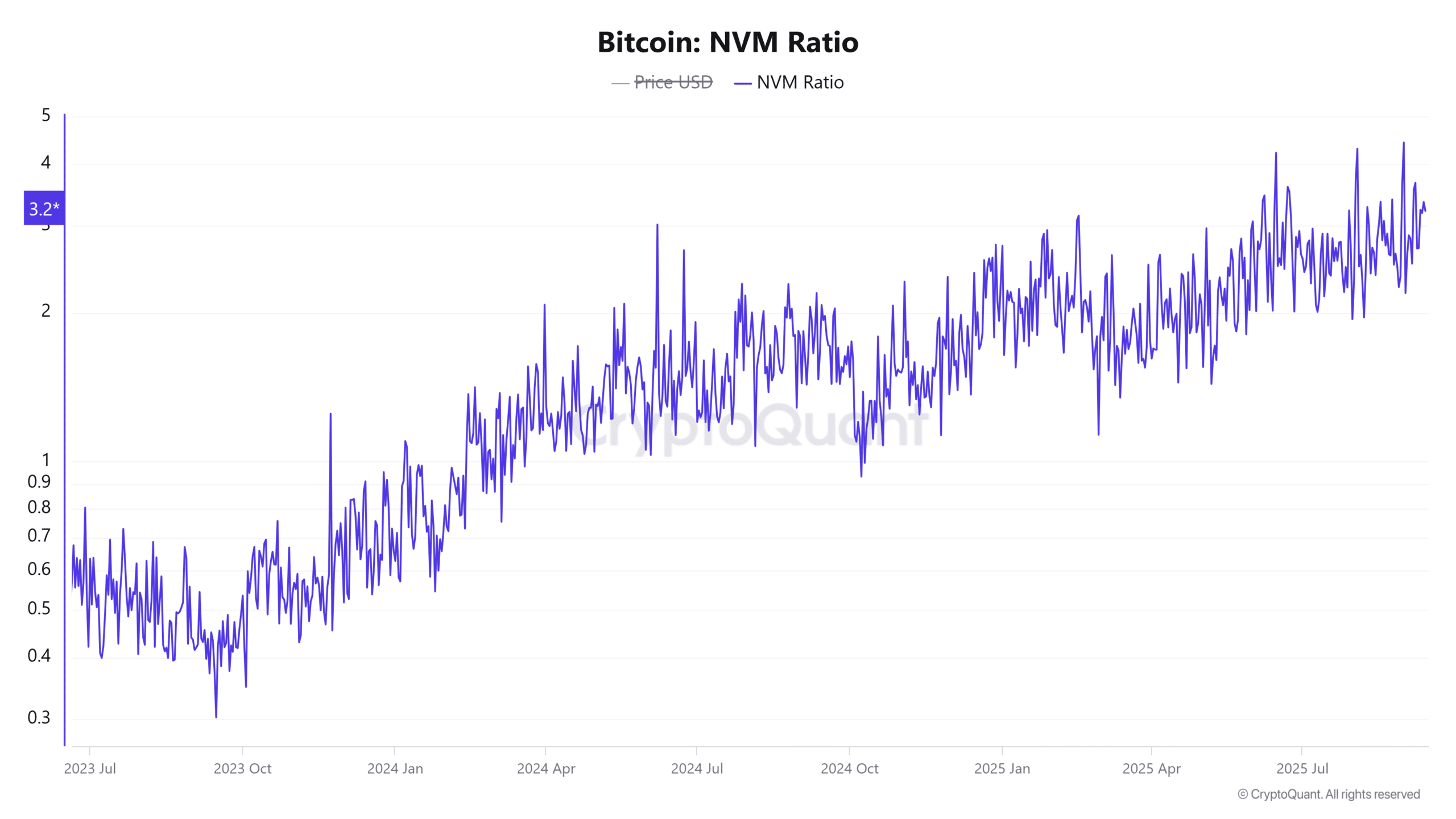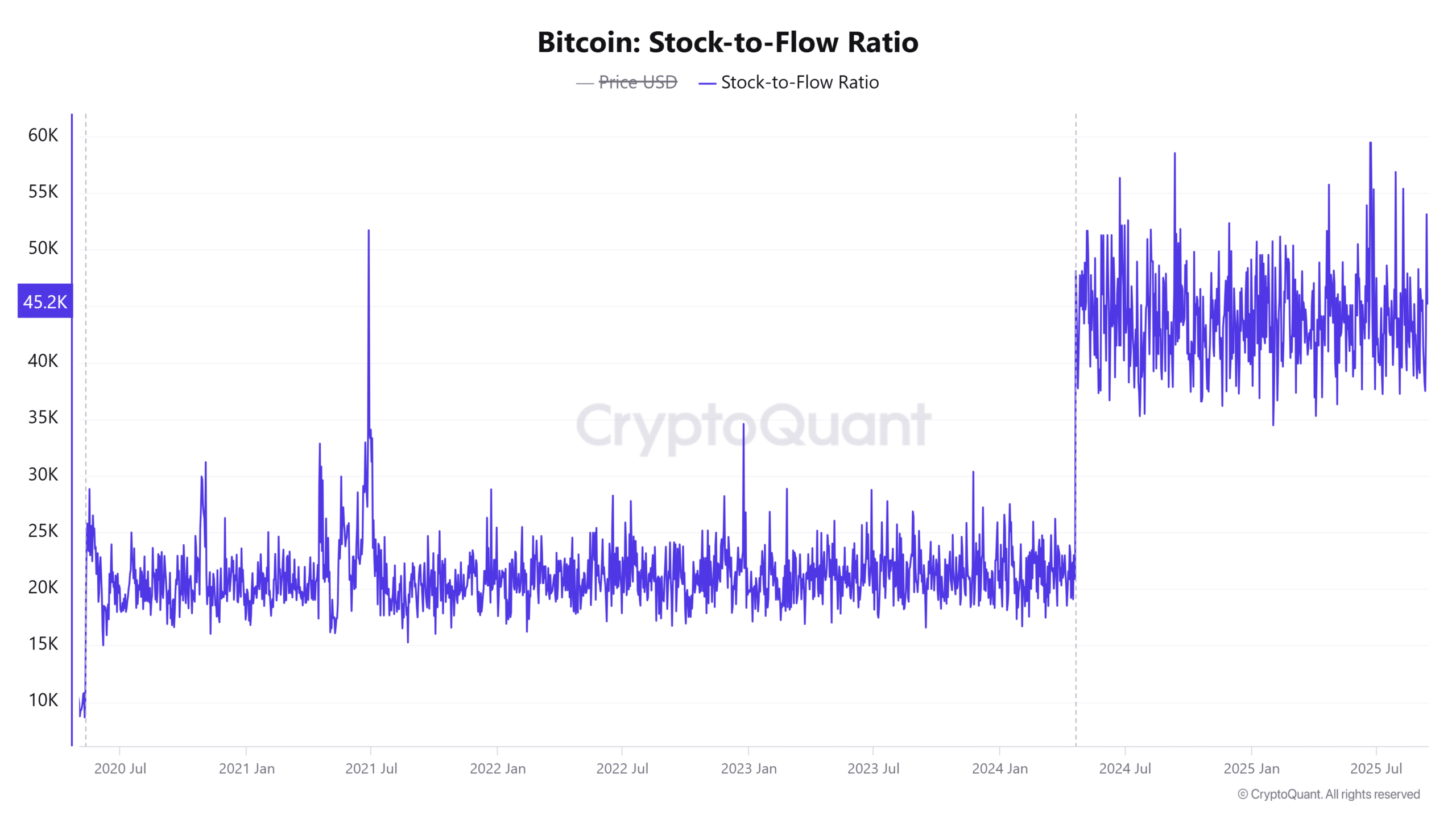Bitcoin’s market outlook is currently indecisive: profitability sits near all-time highs while valuation and scarcity metrics show clear weakness, and exchange inflows signal short-term liquidity risk — creating mixed signals for traders weighing buy-or-hold strategies.
-
Profitability vs. Fundamentals
-
92% of Bitcoin supply is in profit, boosting near-term market optimism.
-
NVM fell 4.54% and Stock-to-Flow dropped 42.86%, signaling valuation and scarcity concerns.
Bitcoin market outlook: mixed signals from profitability, NVM and Stock-to-Flow; monitor exchange inflows and network metrics for trade-ready timing. Read the analysis.
What is Bitcoin’s current market outlook?
Bitcoin market outlook is mixed: widespread profitability suggests bullish sentiment, but falling Network Value to Metcalfe (NVM) and a sharp Stock-to-Flow decline point to weakening valuation and scarcity narratives. Traders face short-term liquidity risk as exchange inflows rise while network fundamentals cool.
How does the NVM ratio affect Bitcoin price?
The NVM ratio compares market capitalization with network connectivity and activity. A 4.54% NVM decline indicates the market cap is outpacing on-chain engagement. Historically, NVM drops often precede slower price appreciation or consolidation, signaling caution for momentum-driven strategies.
Key Takeaways
Profitability is high, but valuation and scarcity metrics show weakening strength. Meanwhile, liquidity flows highlight uncertainty, leaving Bitcoin’s market outlook indecisive.
Bitcoin’s [BTC] Percent Supply in Profit climbed to 92%, a level that historically preceded bullish phases but also profit-taking risks. At this stage, most holders were in gains, suggesting broad market strength.
Historically, when profit supply crossed 90%, rallies sometimes extended, but corrections followed when enthusiasm peaked.
Investors now face a mixed scenario where optimism is abundant, but caution persists.
Sustainability will depend on whether buyers hold firm or sellers lock in gains.
Falling NVM ratio causes a problem
The Network Value to Metcalfe Ratio (NVM) fell by 4.54%, showing cracks in Bitcoin’s valuation relative to network activity.
This metric compares market capitalization against the strength of active connections. A decline suggests market value may be running ahead of network fundamentals.
Historically, falling NVM ratios have often preceded slowdowns or weaker price expansions, adding a cautionary filter to bullish sentiment.

Source: CryptoQuant
Stock-to-Flow ratio weakness adds doubt
Bitcoin’s Stock-to-Flow Ratio dropped a sharp 42.86%, weakening one of the longstanding scarcity models.
This ratio measures scarcity by comparing circulating supply to new issuance. A steep drop undermines supply-driven valuation narratives tied to prior cycles.
Many analysts have questioned the model’s reliability. Nevertheless, the decline reduces confidence in scarcity as the primary near-term pricing driver.

Source: CryptoQuant
Exchange flows reveal liquidity pressure
Spot inflows and outflows show shifting liquidity, with a $39.13 million positive inflow at press time, reflecting cautious positioning.
Sustained exchange inflows increase available supply and are often associated with higher selling pressure. Persistent outflows typically indicate accumulation and lower sell-side risk.
The recent netflow points to short-term uncertainty: liquidity is neither draining decisively nor consolidating into long-term holders.
Traders are watching whether inflows accelerate, which could tilt the market bearish, or whether outflows resume, supporting bullish momentum.

Source: CoinGlass
Can Bitcoin’s bullish signals overcome its cracks?
While 92% of supply in profit reflects broad optimism, the 4.54% NVM decline and 42.86% Stock-to-Flow drop expose weaknesses in valuation and scarcity narratives.
Exchange inflows further highlight liquidity risk. Together, these signals make the market’s short-term direction unclear.
Traders should combine on-chain metrics with price action and liquidity indicators before committing to directional bets. Conservative risk management and staged exposure are advisable while signals remain conflicted.
Frequently Asked Questions
What does 92% supply in profit mean for Bitcoin?
92% supply in profit means most Bitcoin holders are above their purchase price, increasing potential sell-side pressure from profit-taking, though it can also support momentum if buyers continue accumulating.
How should traders respond to rising exchange inflows?
Rising exchange inflows often precede higher selling pressure. Traders may reduce leverage, tighten stops, or wait for confirmed outflows before increasing long exposure.
Conclusion
Bitcoin’s current market outlook is defined by a tension between high profitability and weakening valuation and scarcity indicators. With mixed NVM, Stock-to-Flow, and exchange-flow signals, the market lacks a clear directional bias. Monitor liquidity and on-chain fundamentals closely and favor measured, risk-aware strategies as conditions evolve. — COINOTAG
